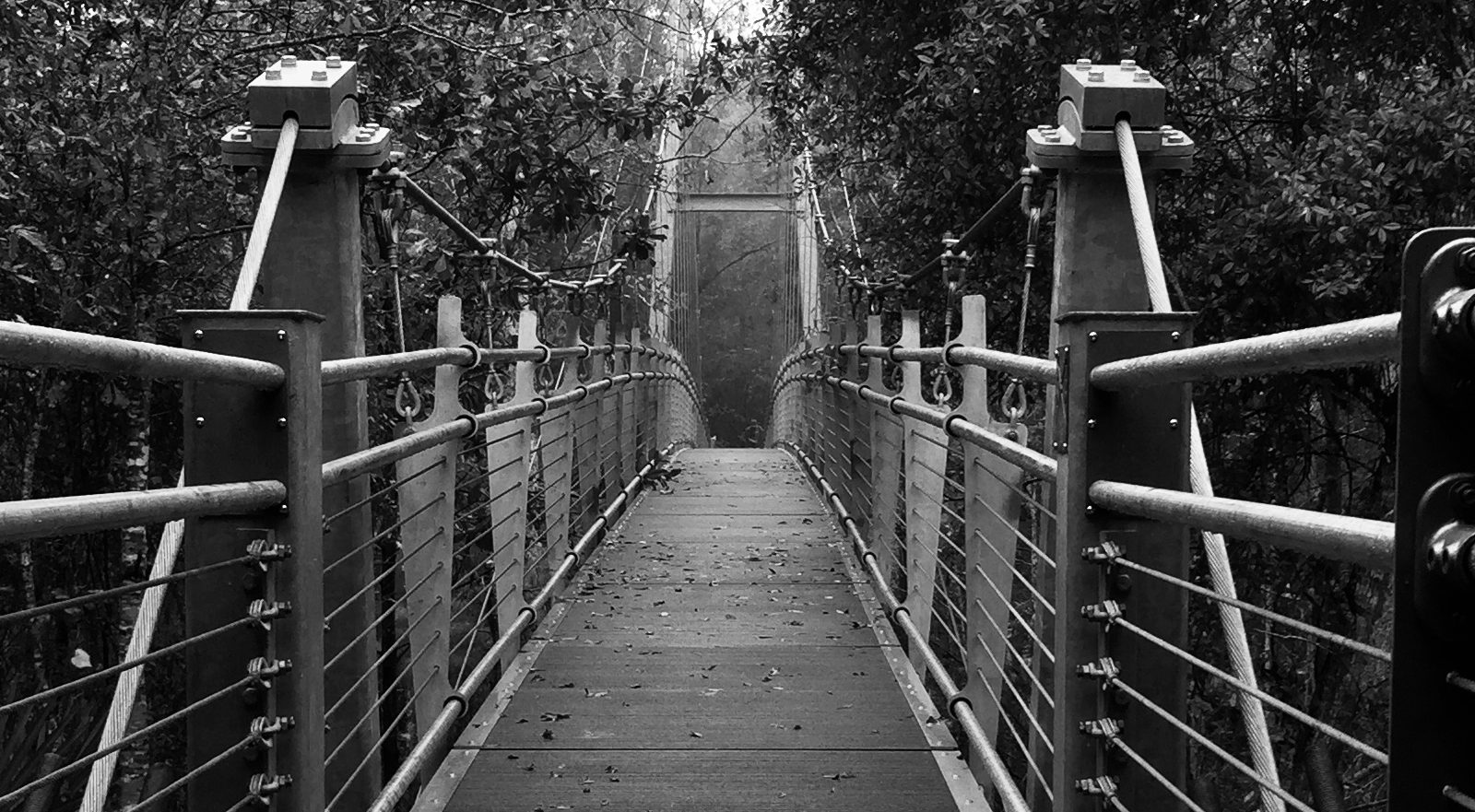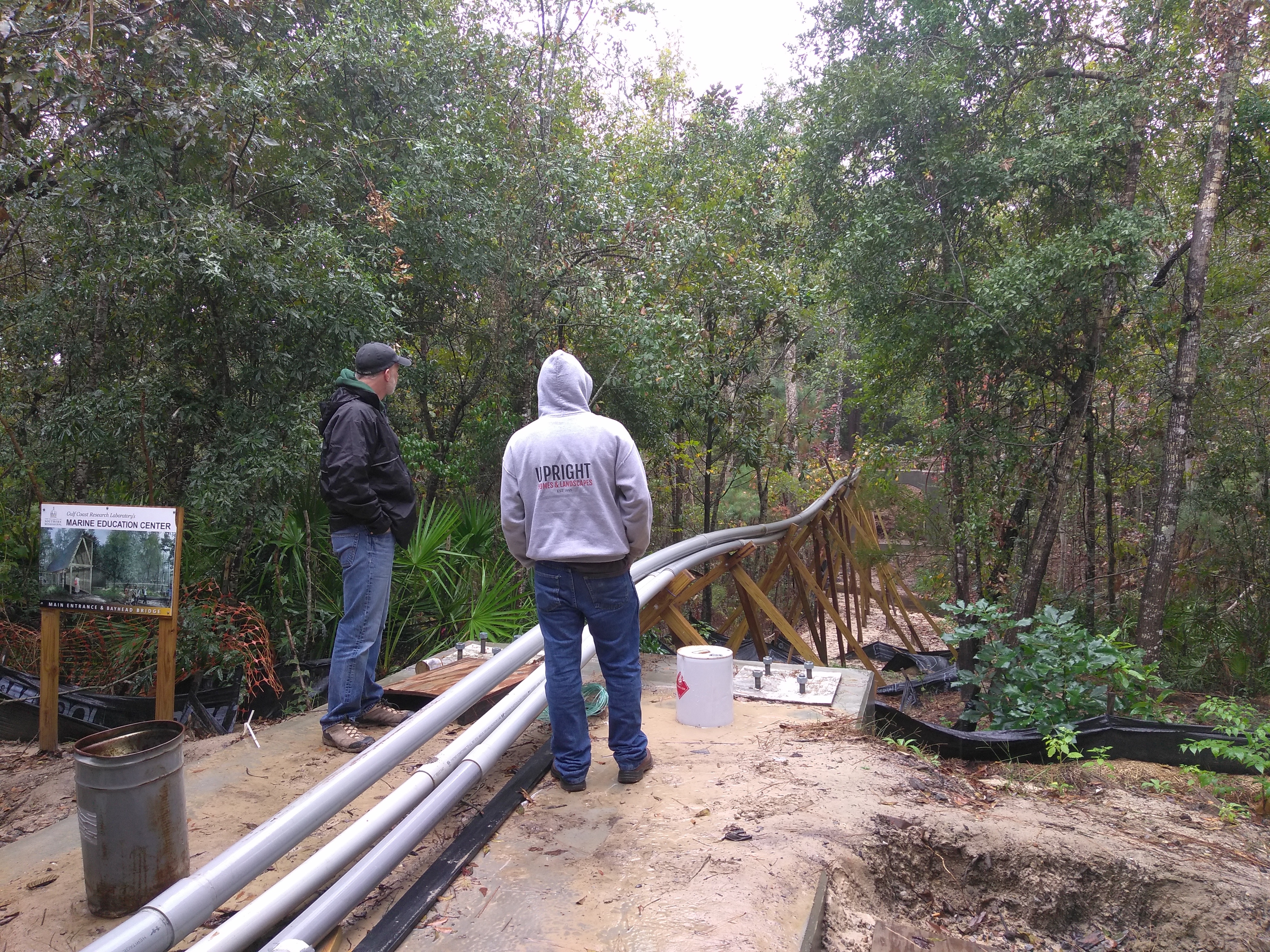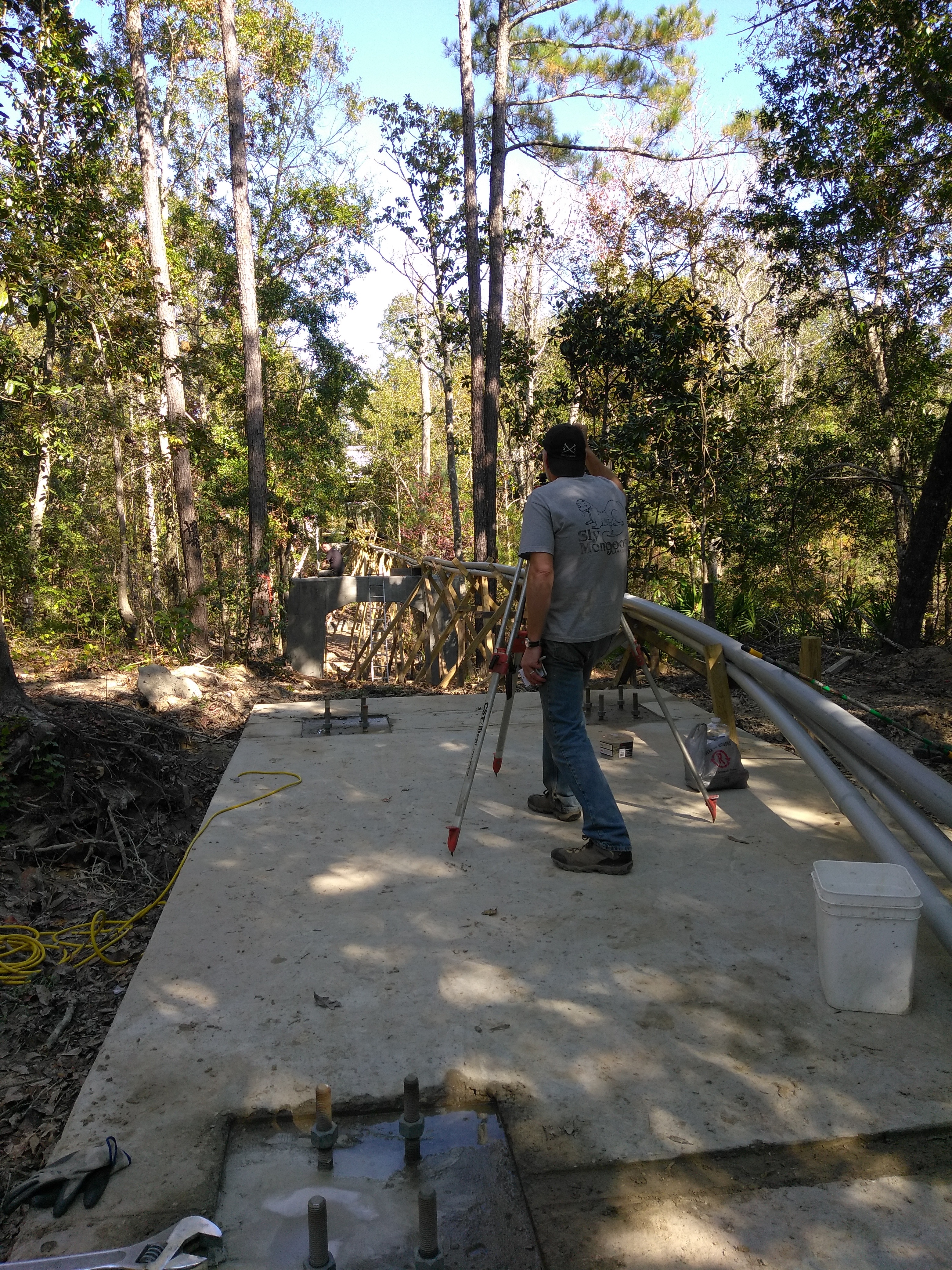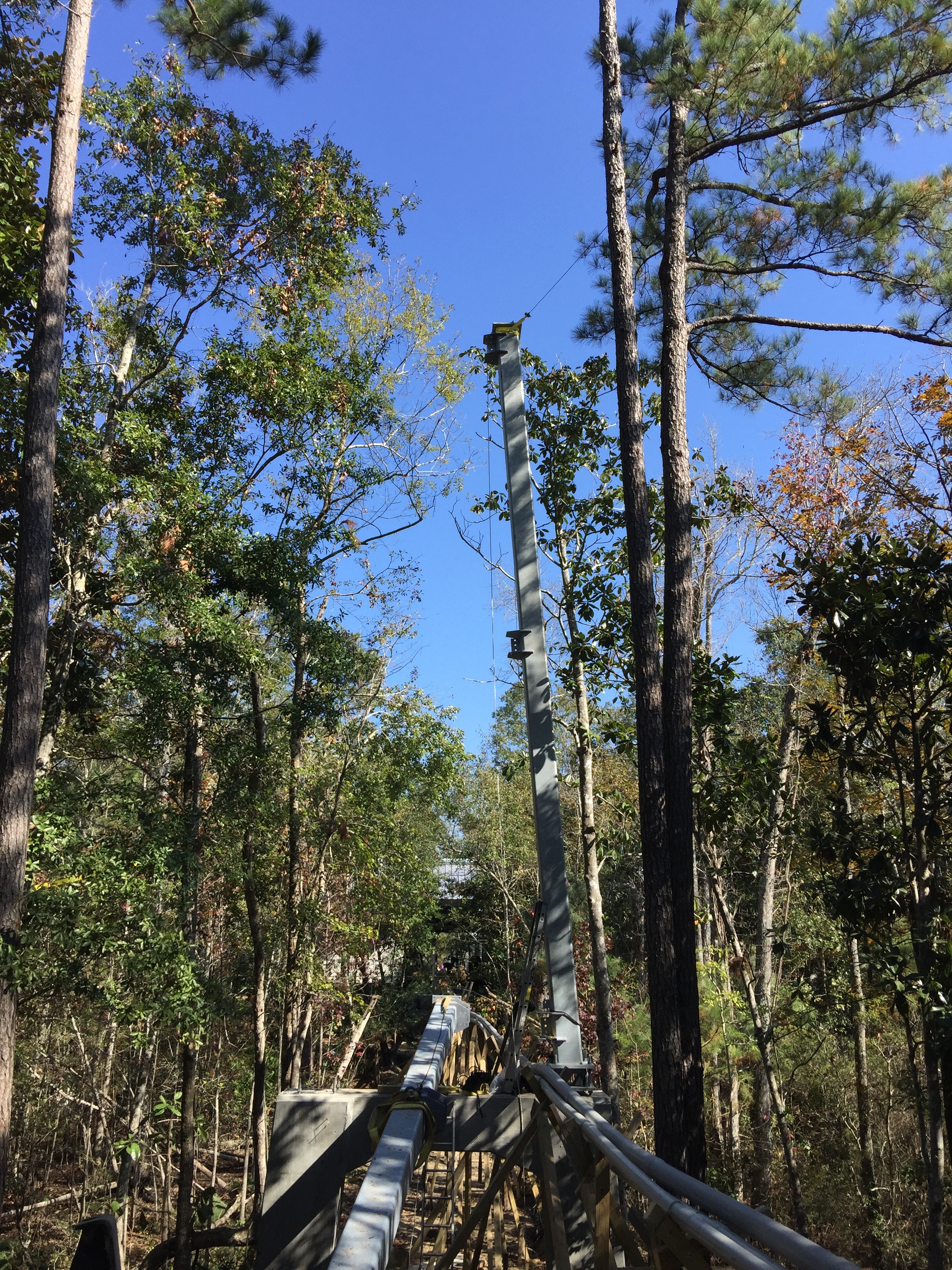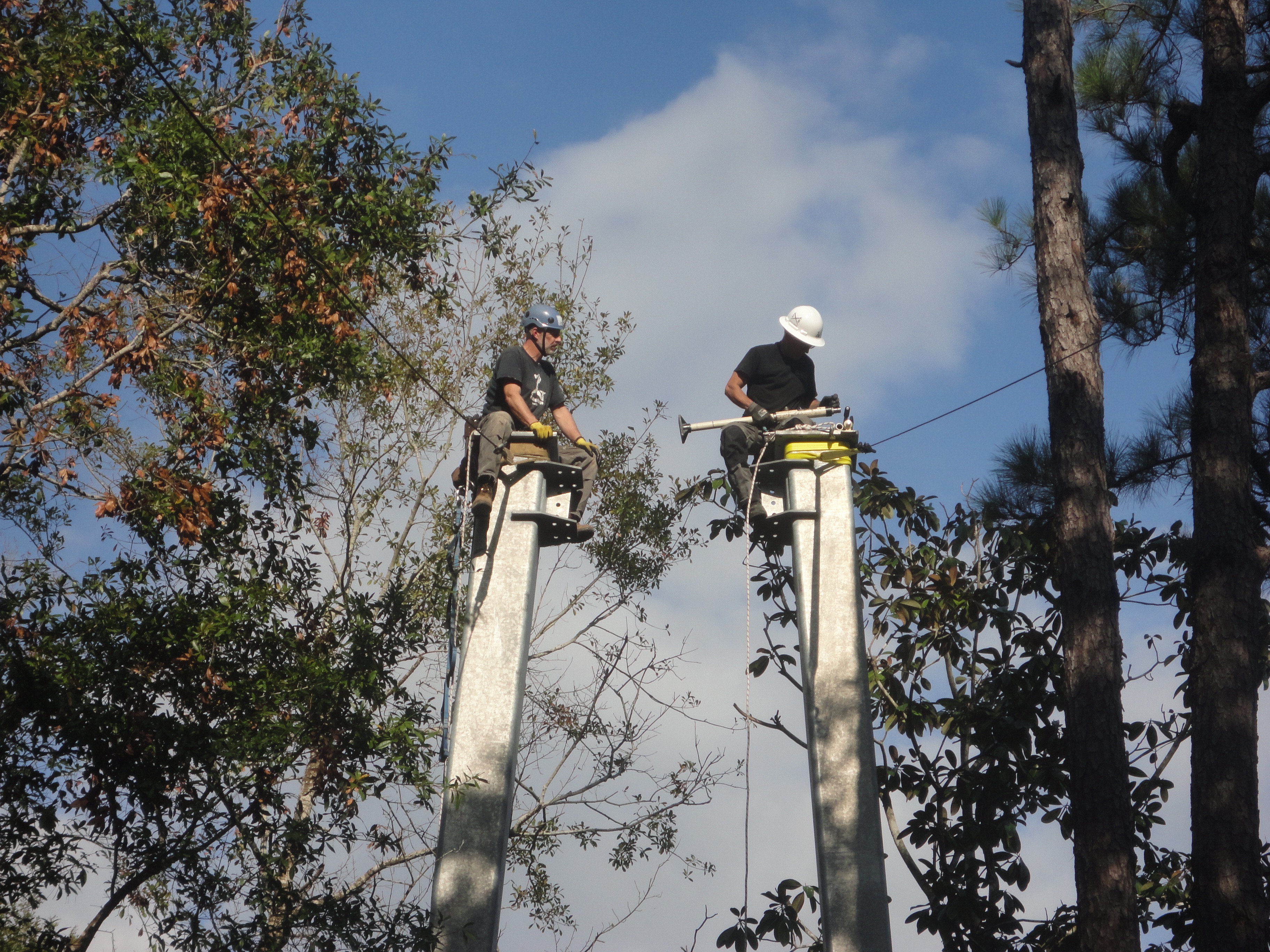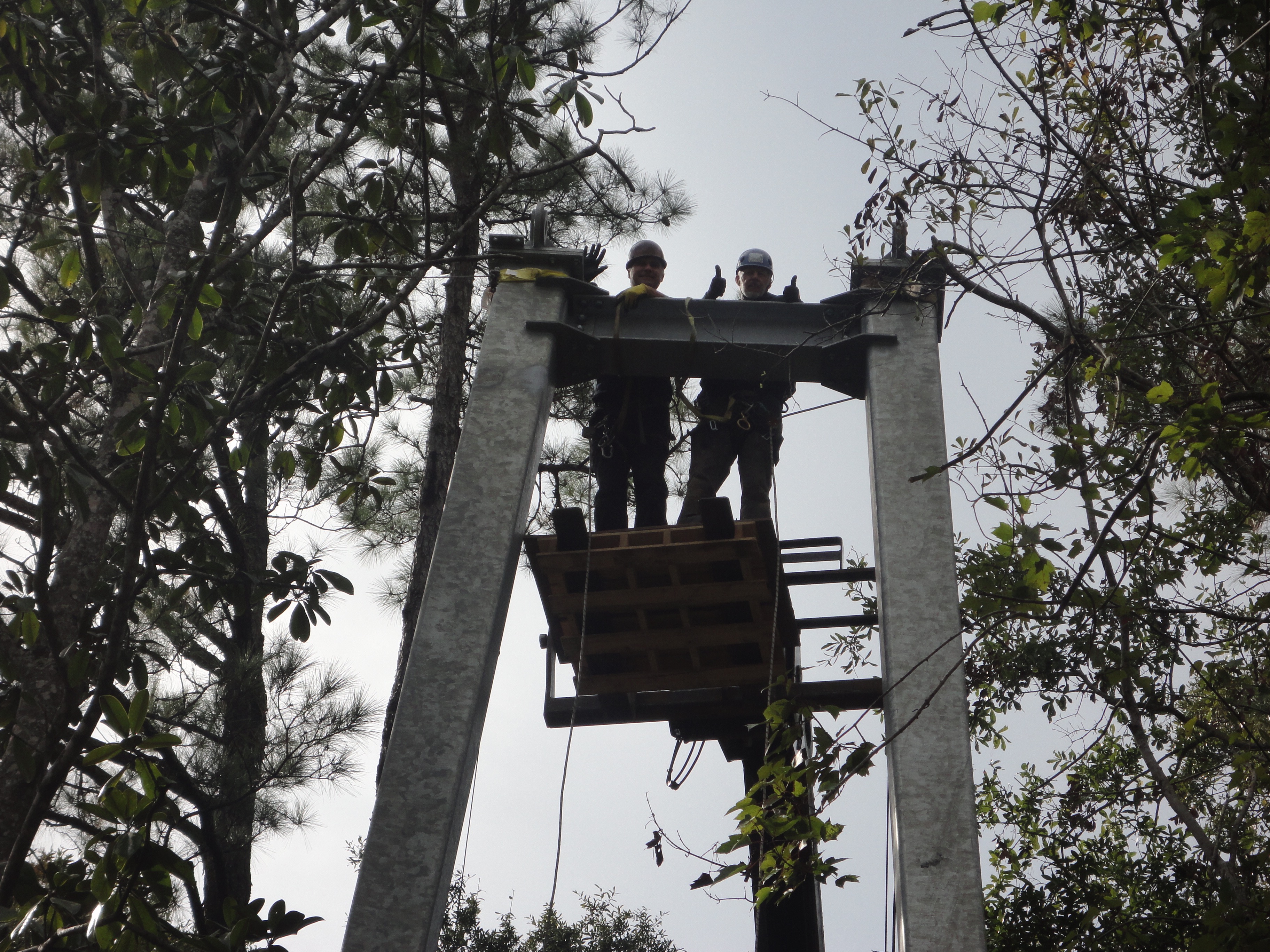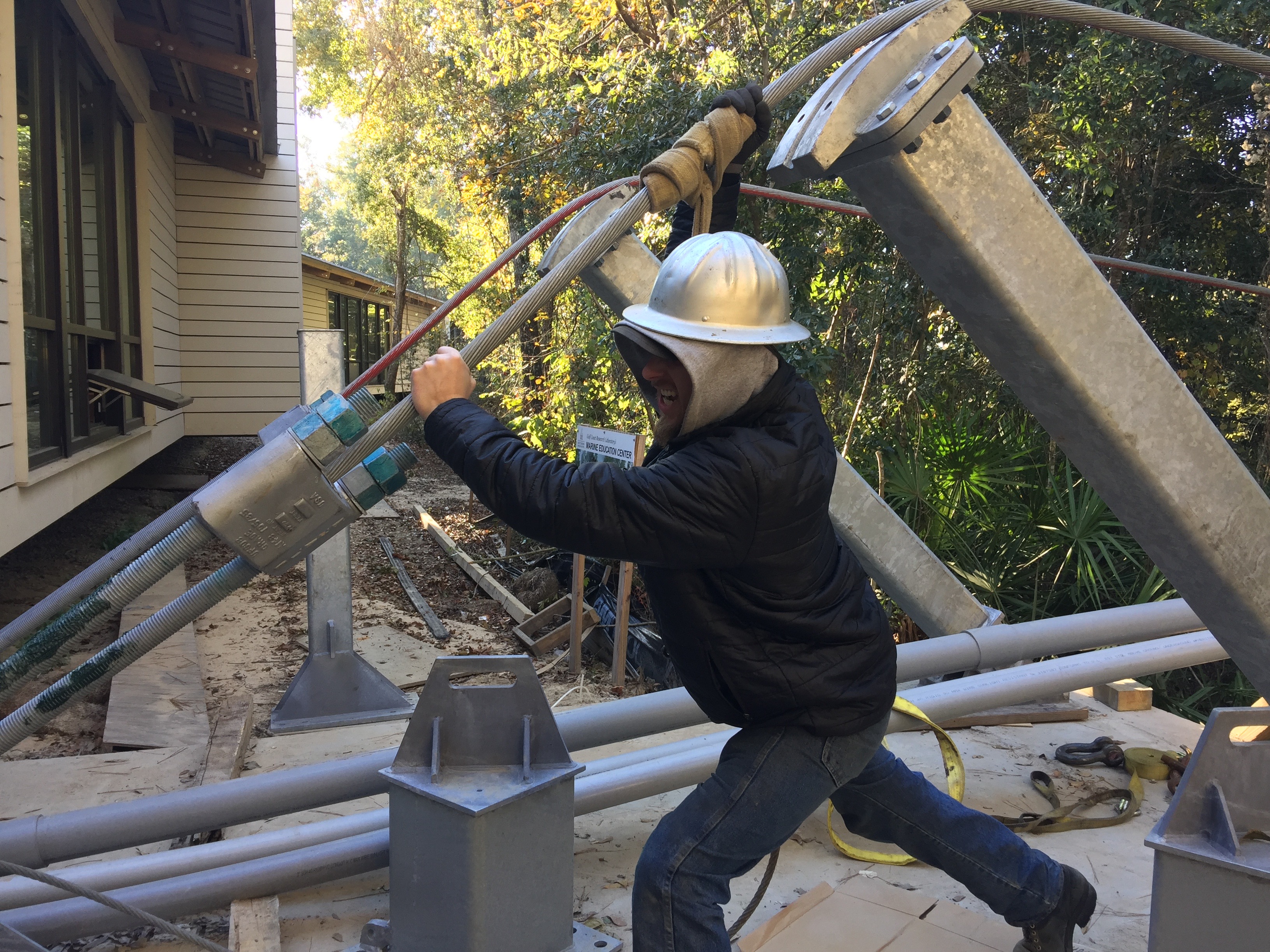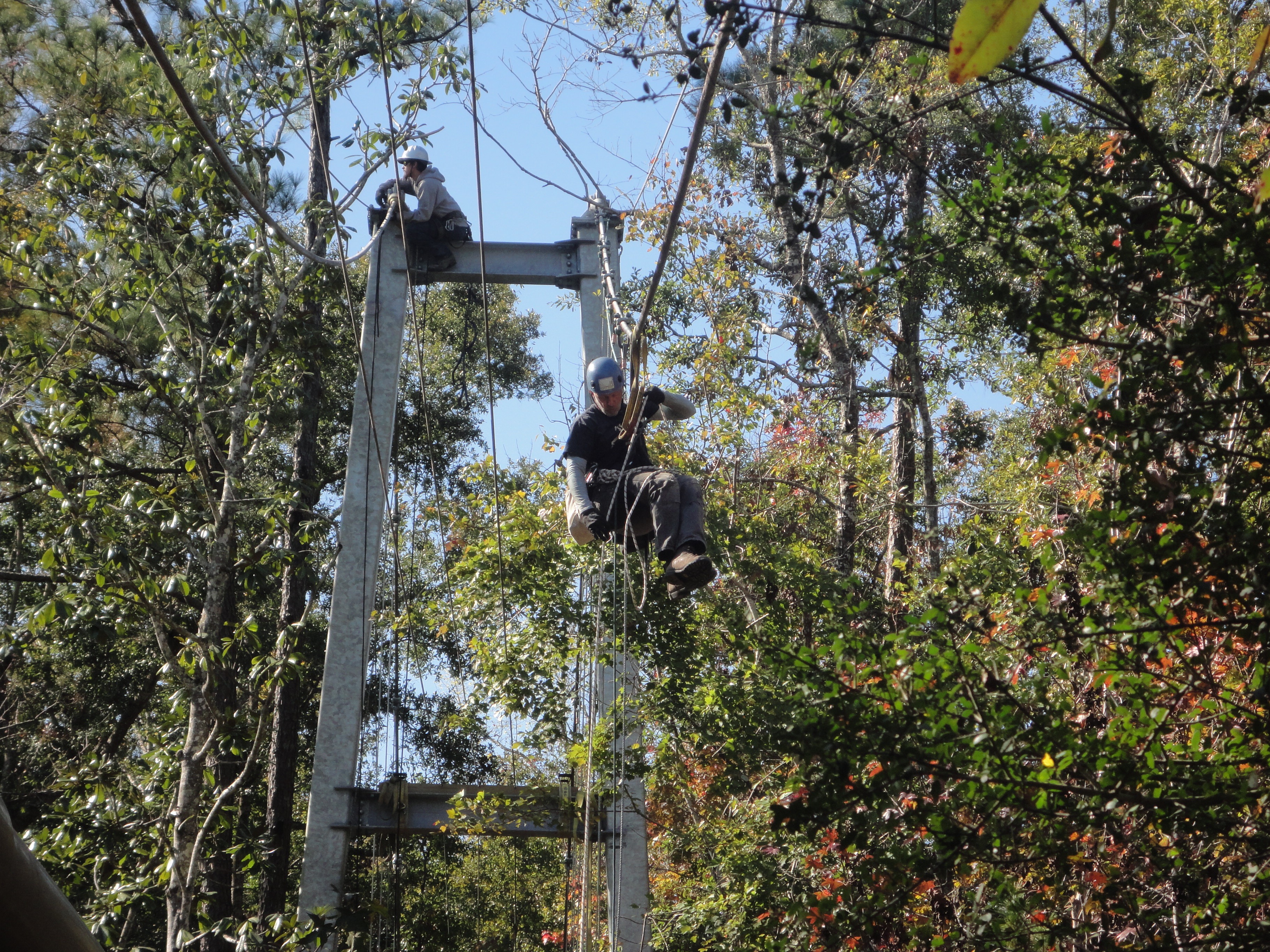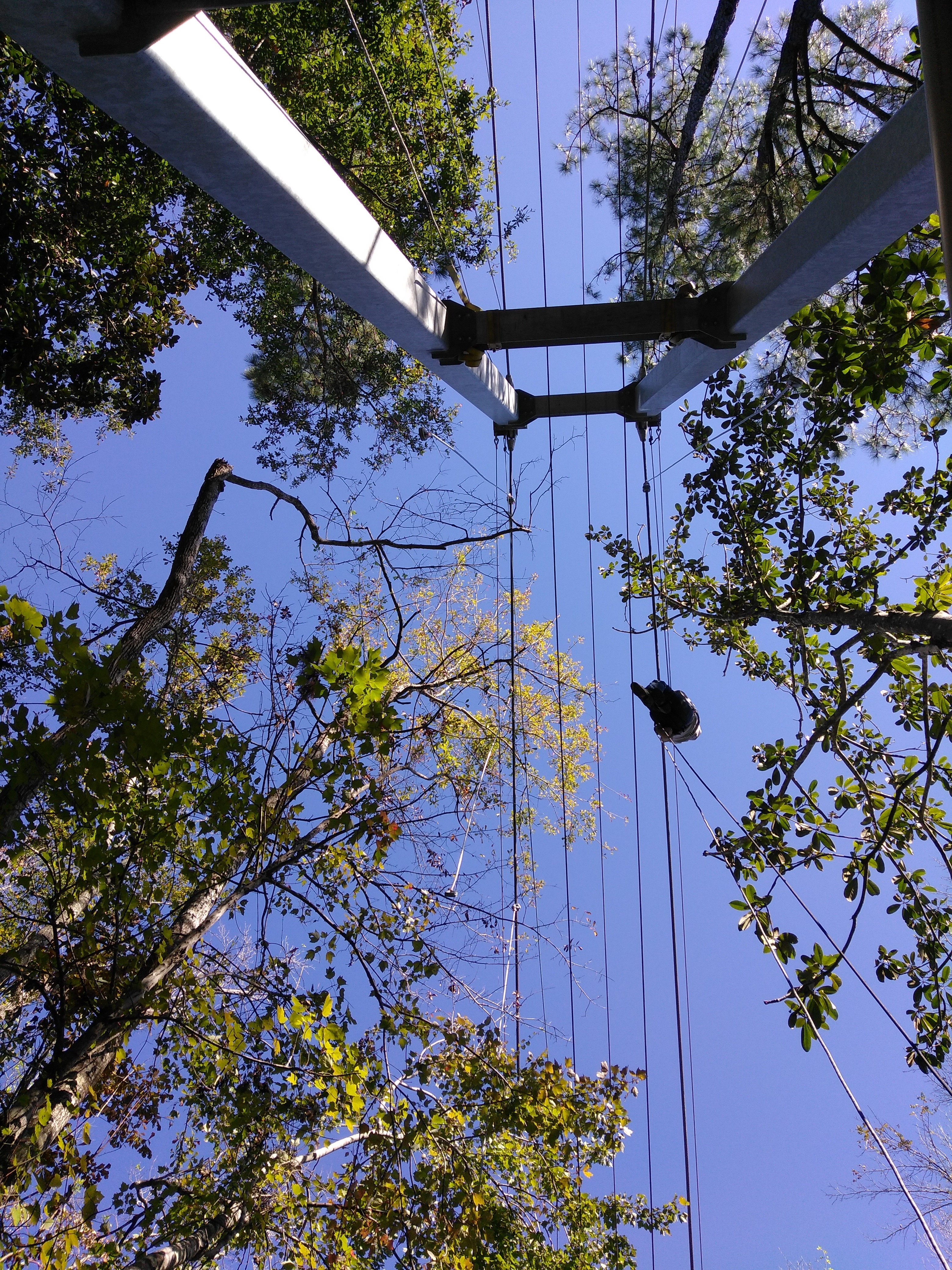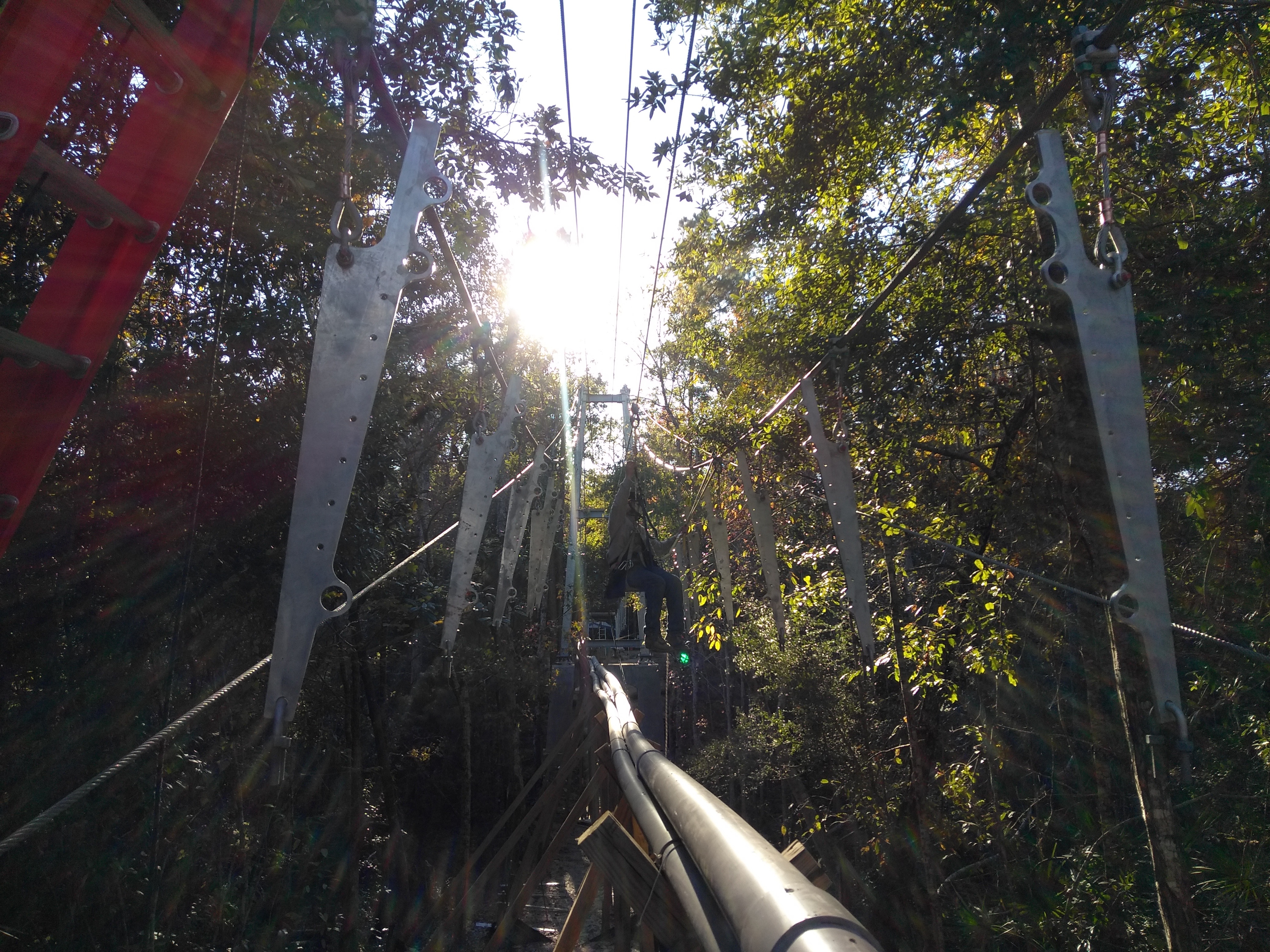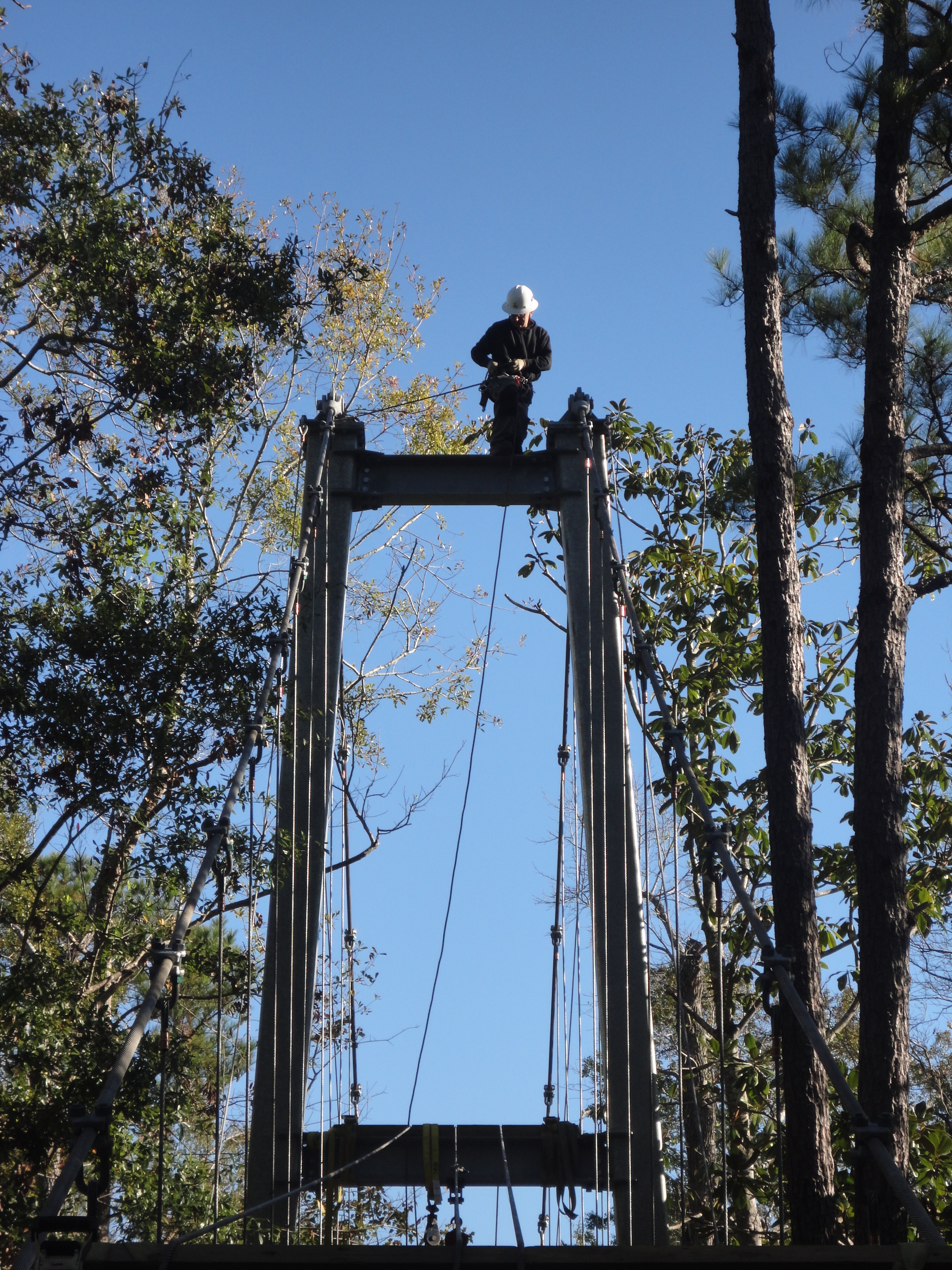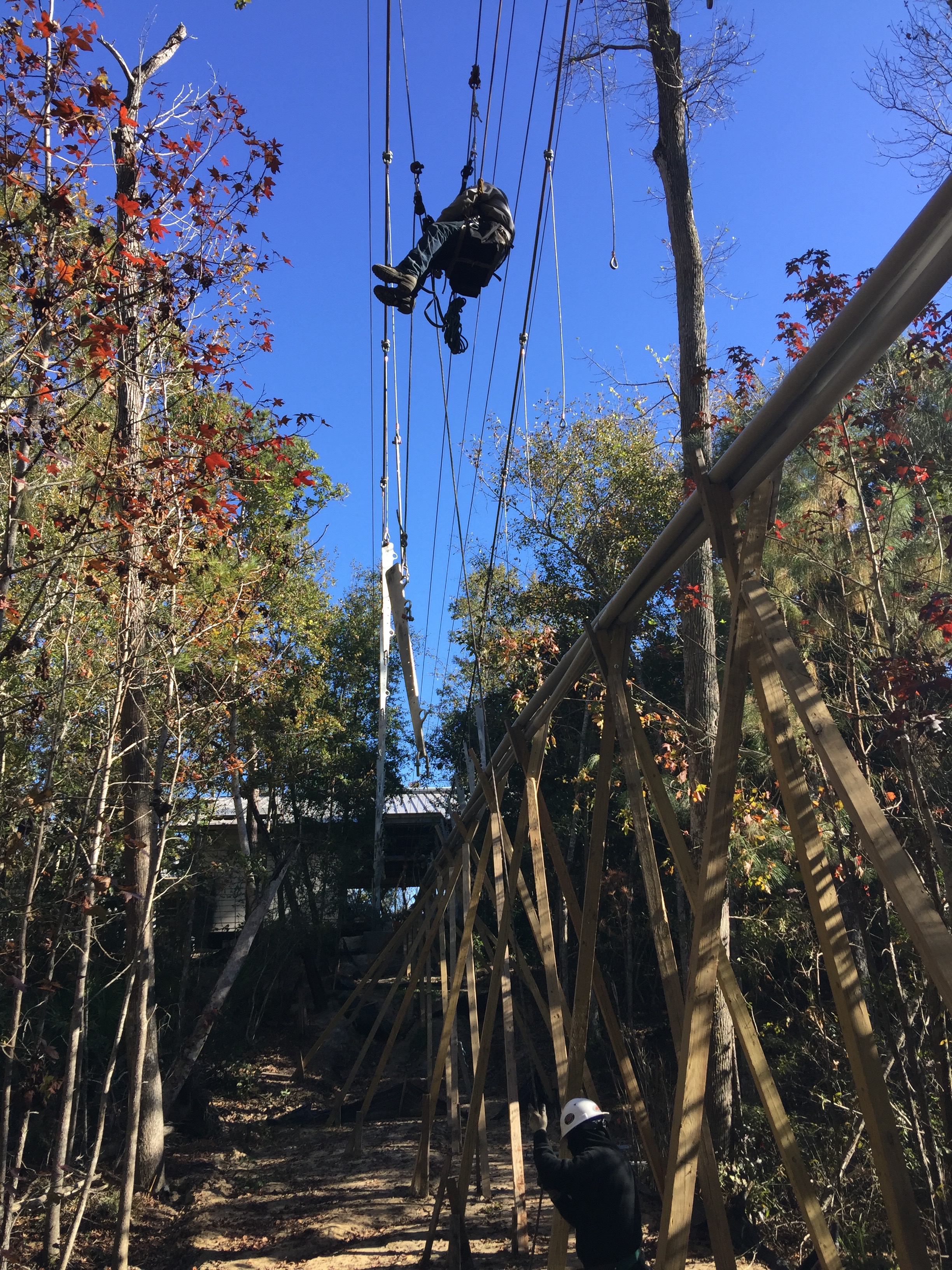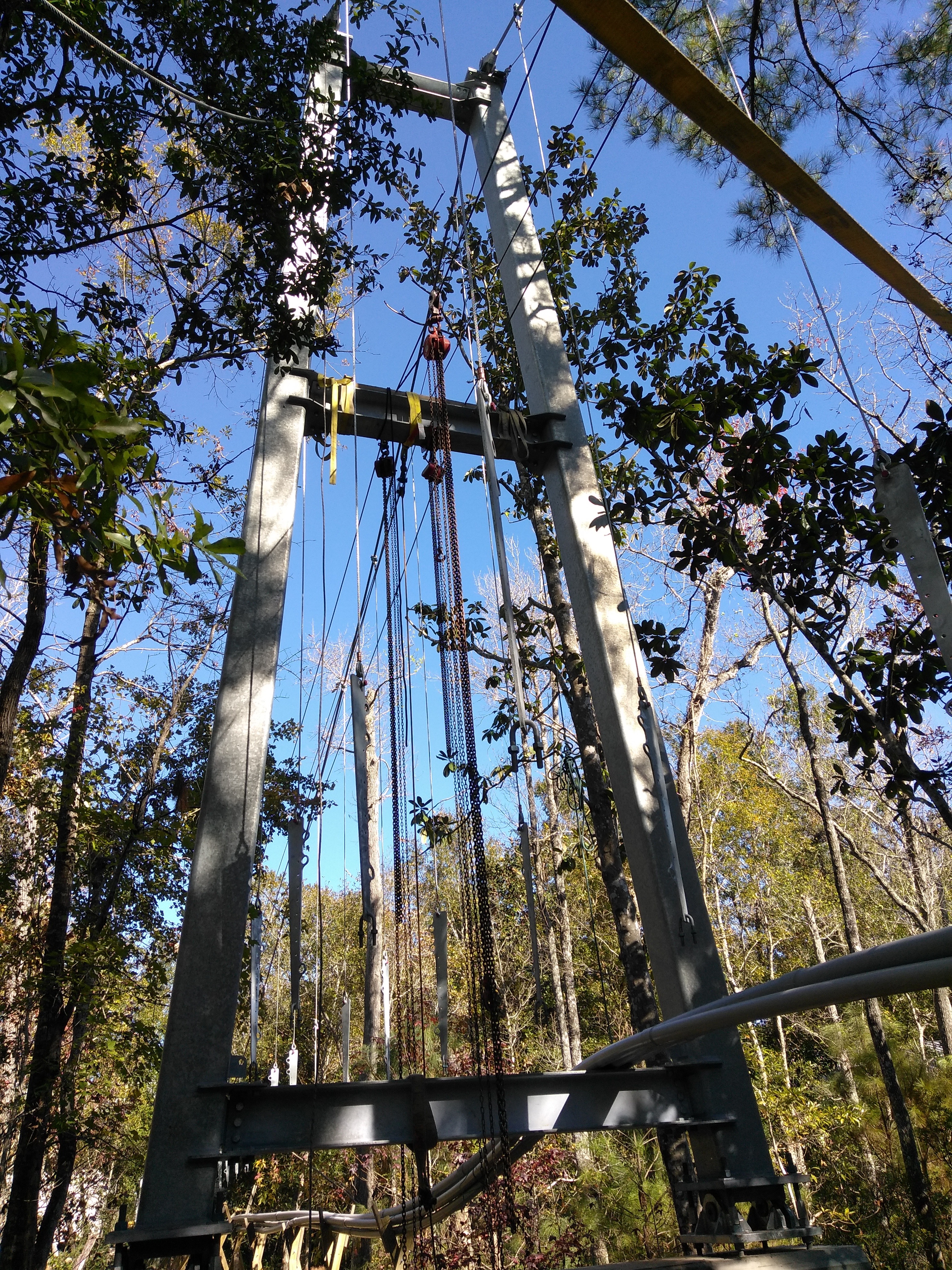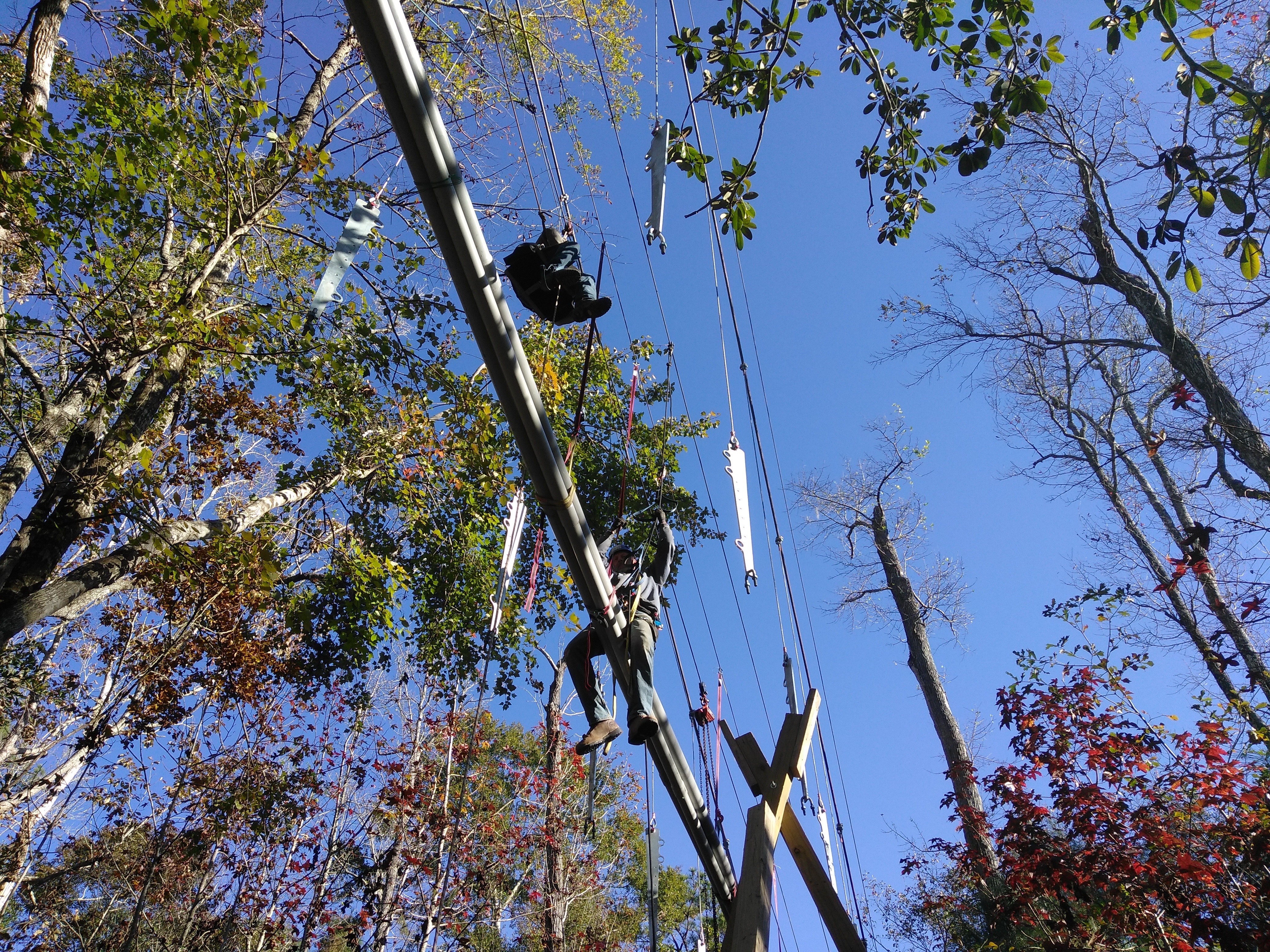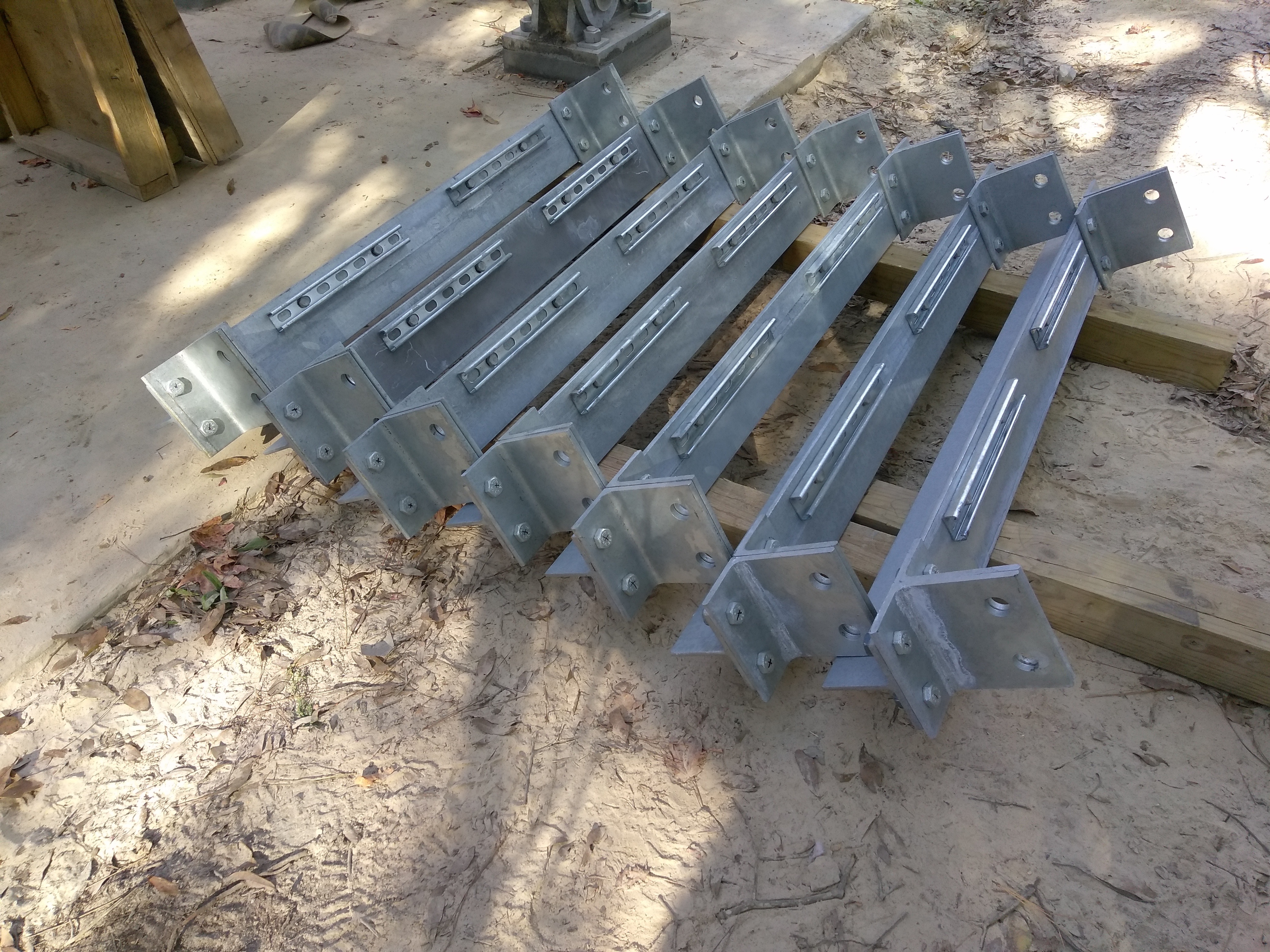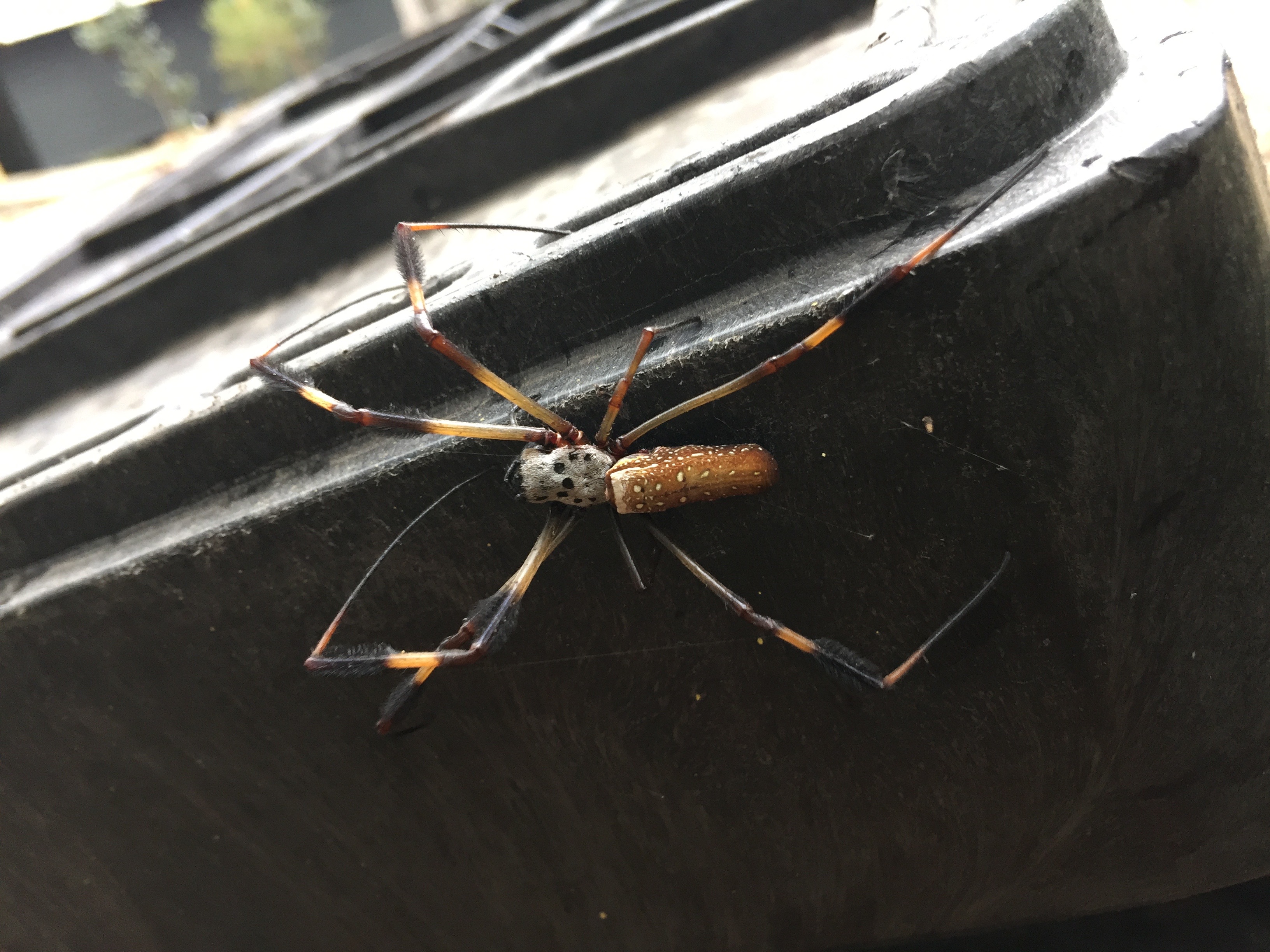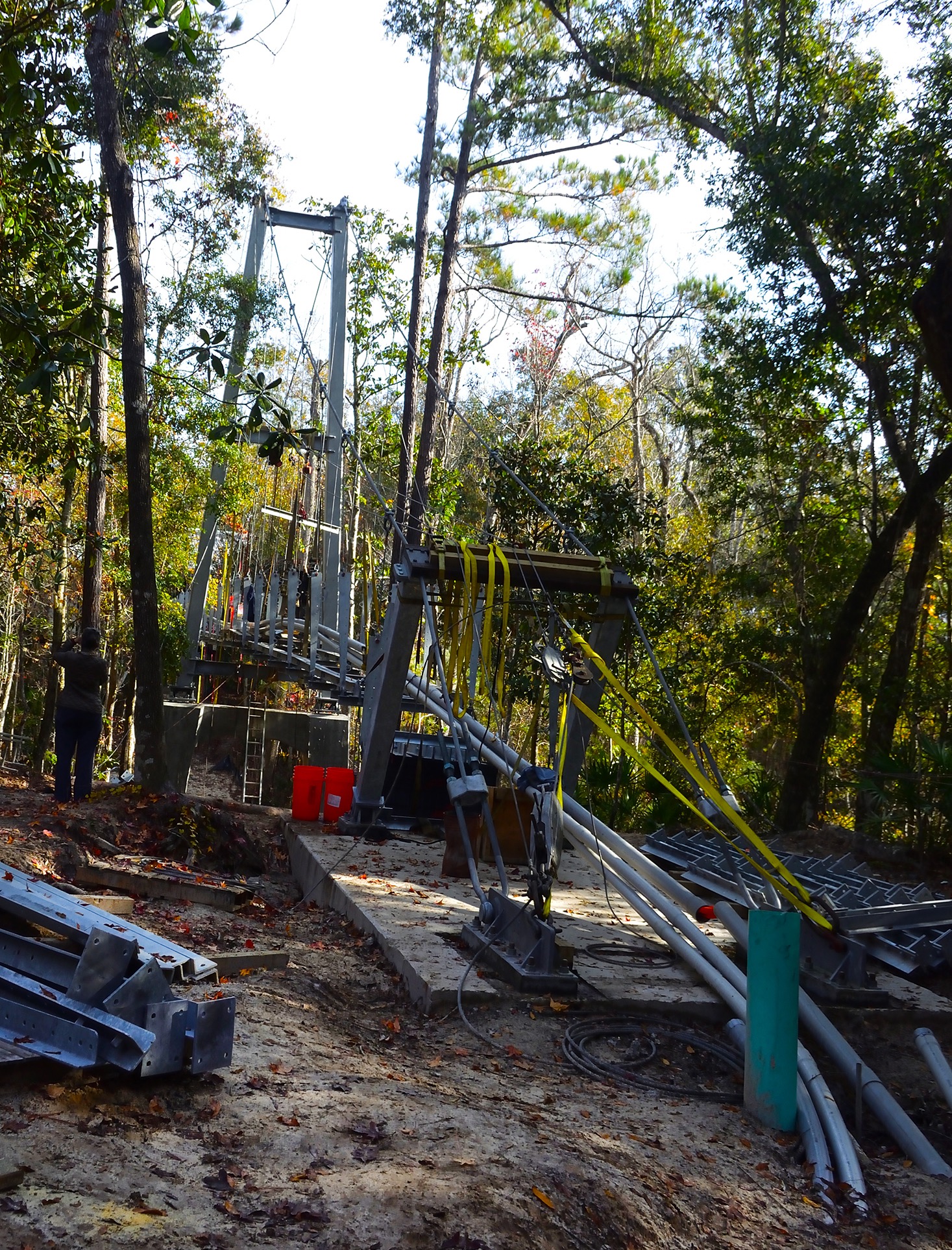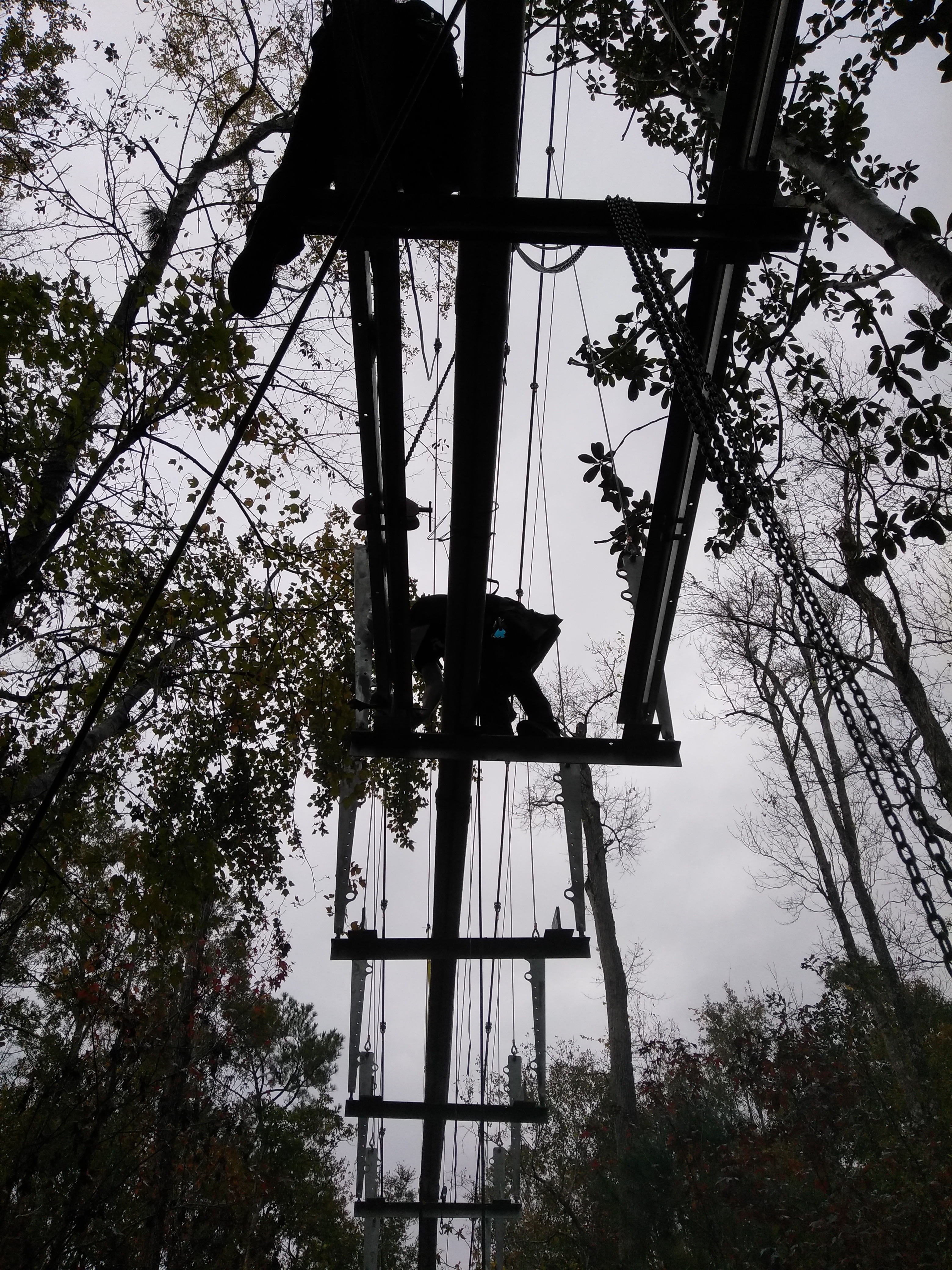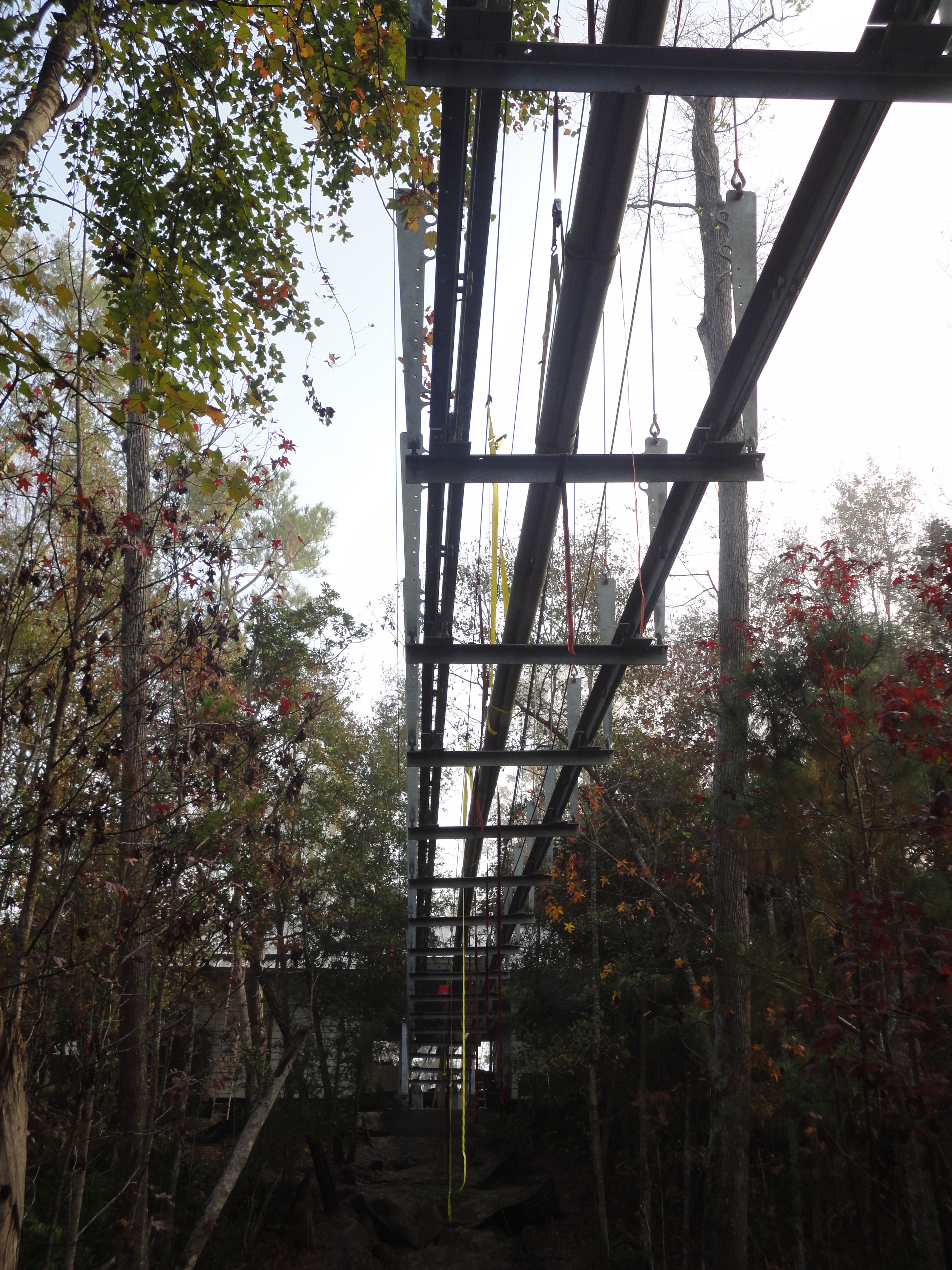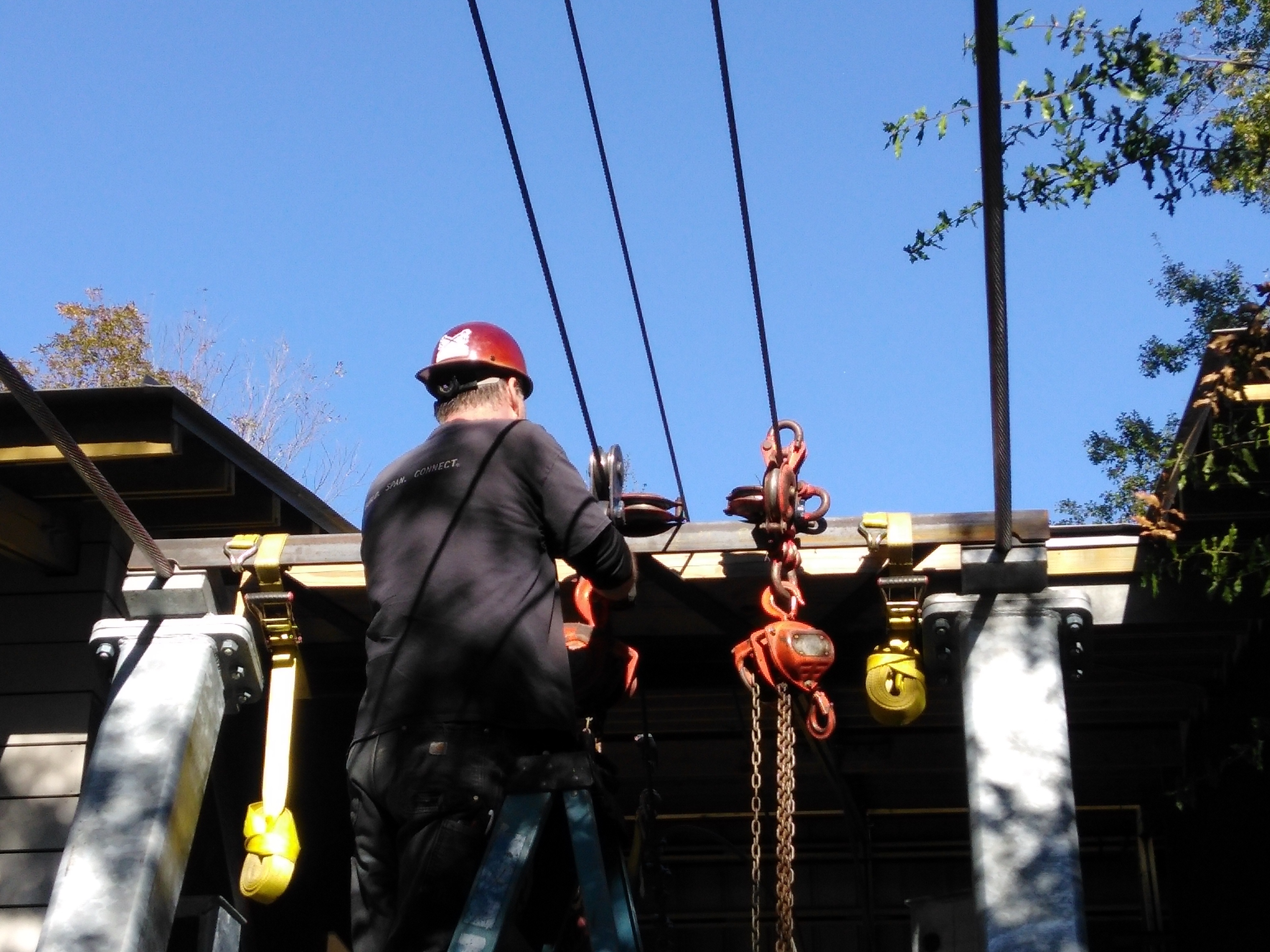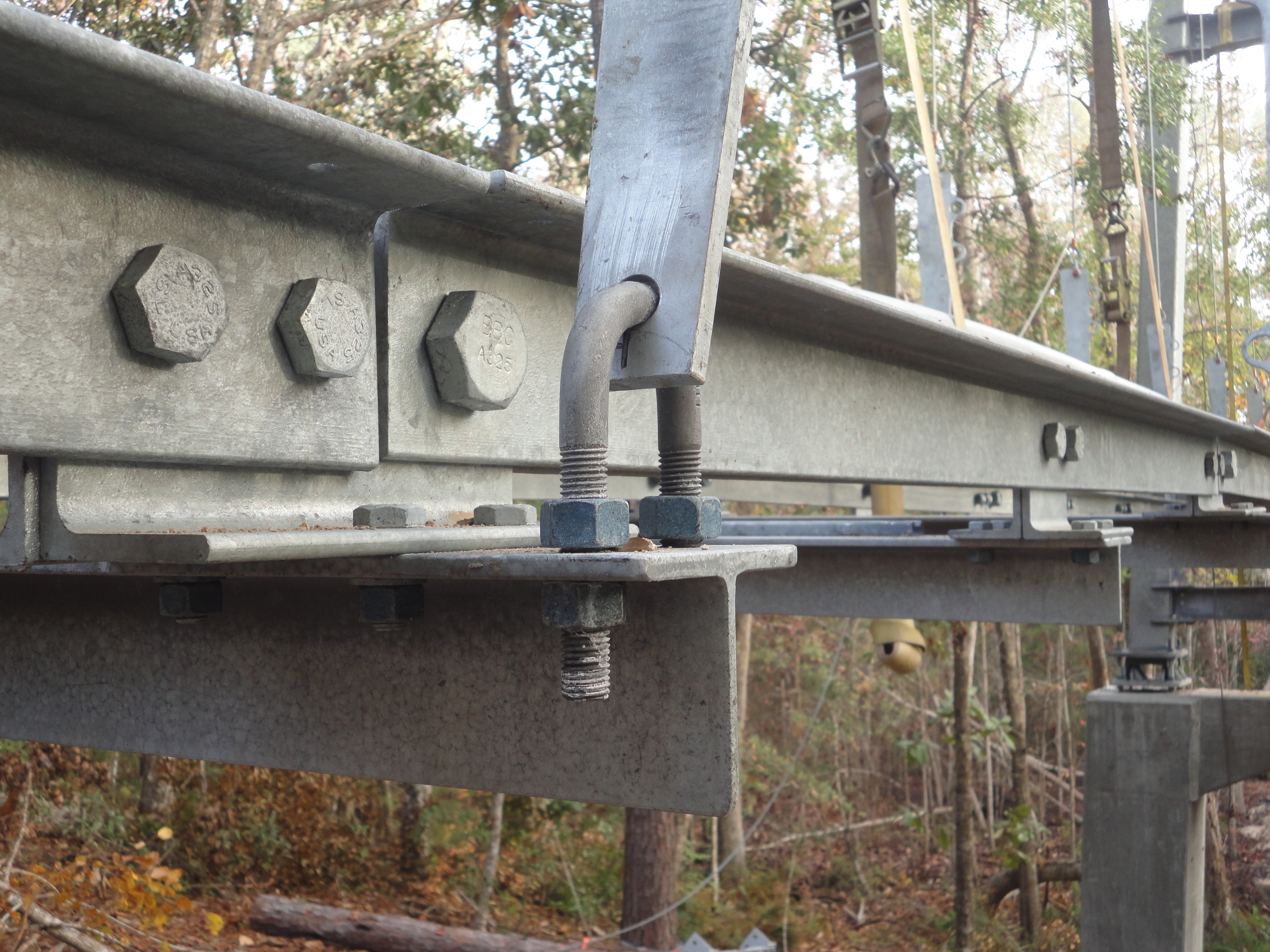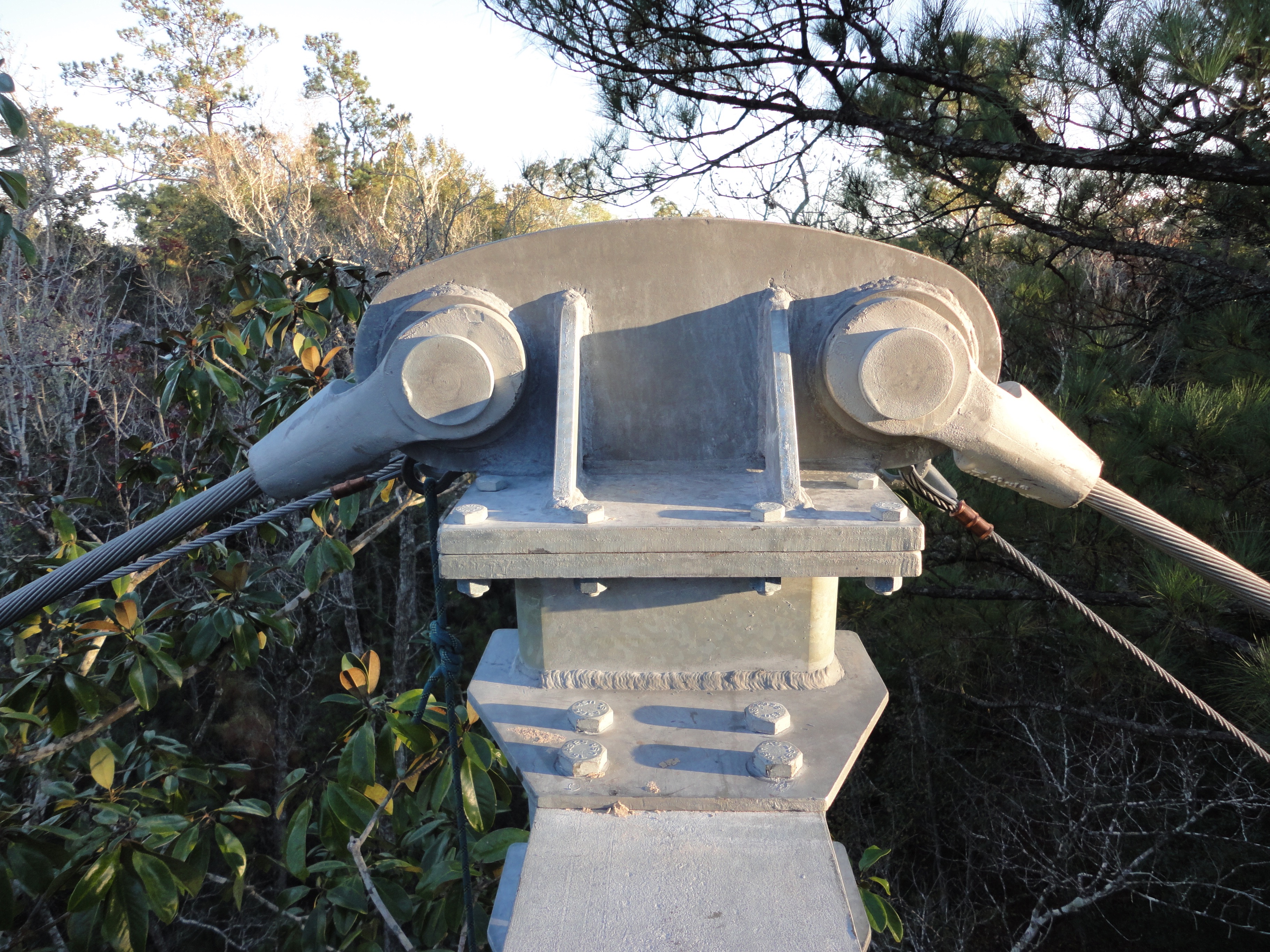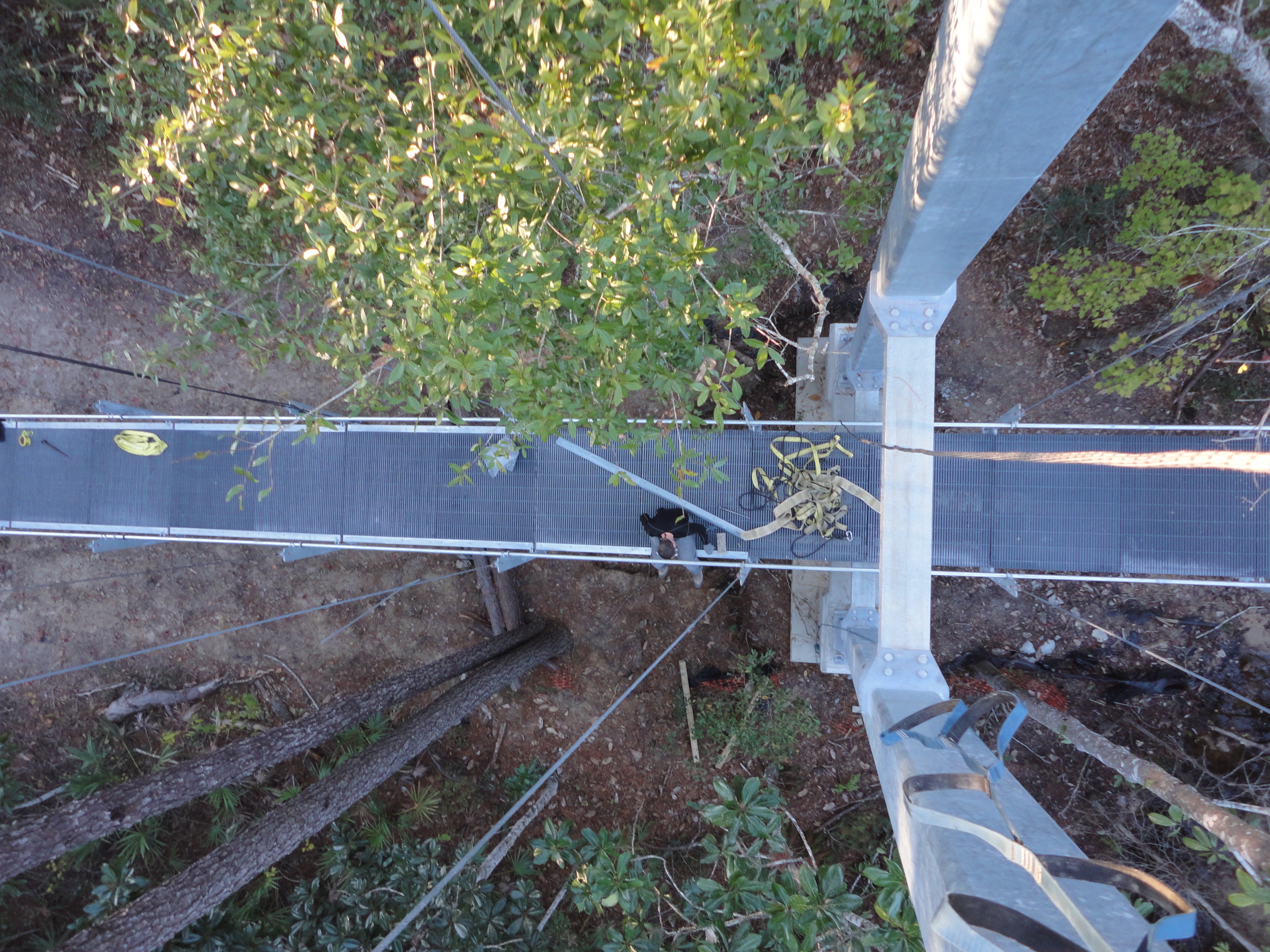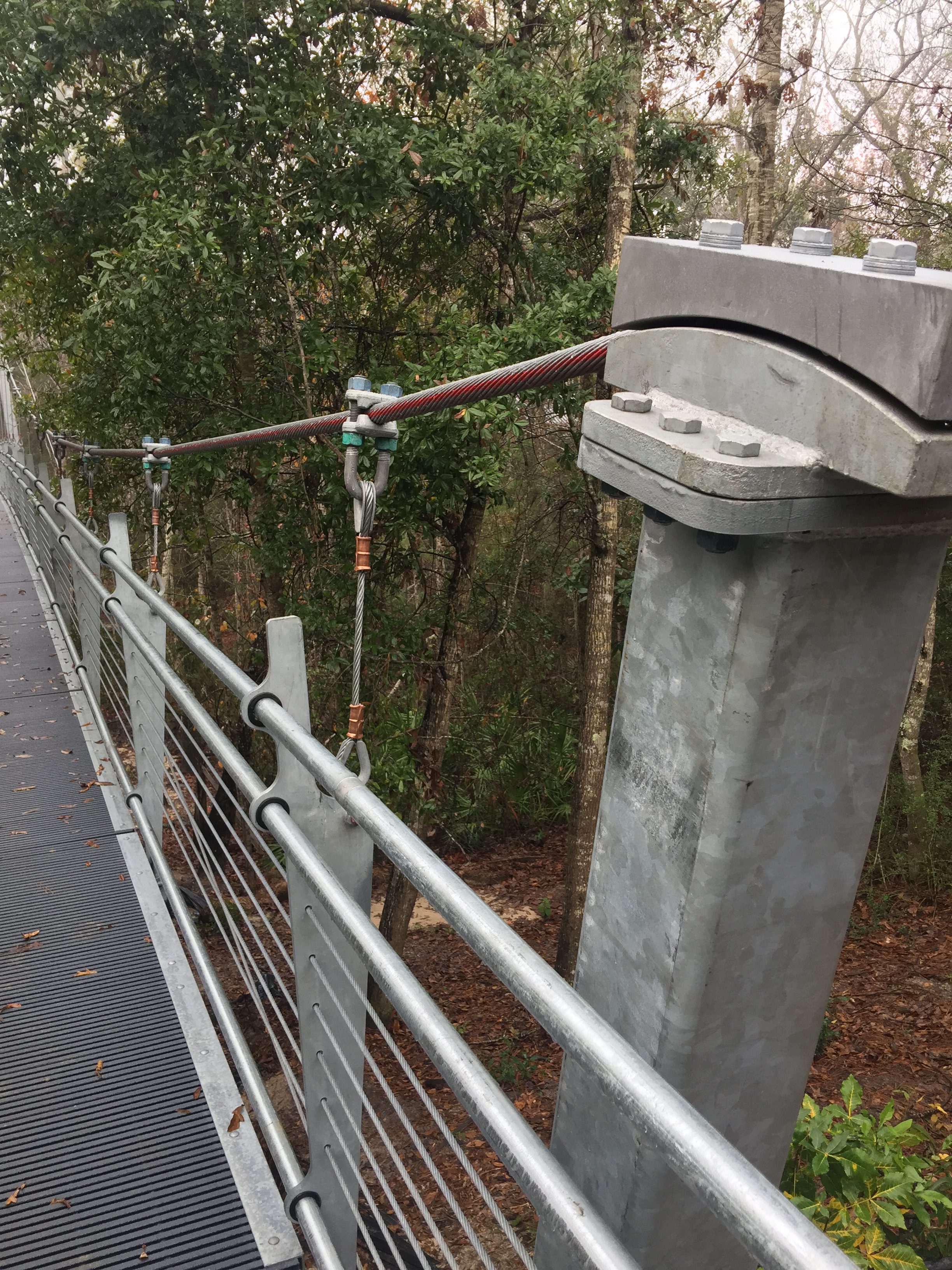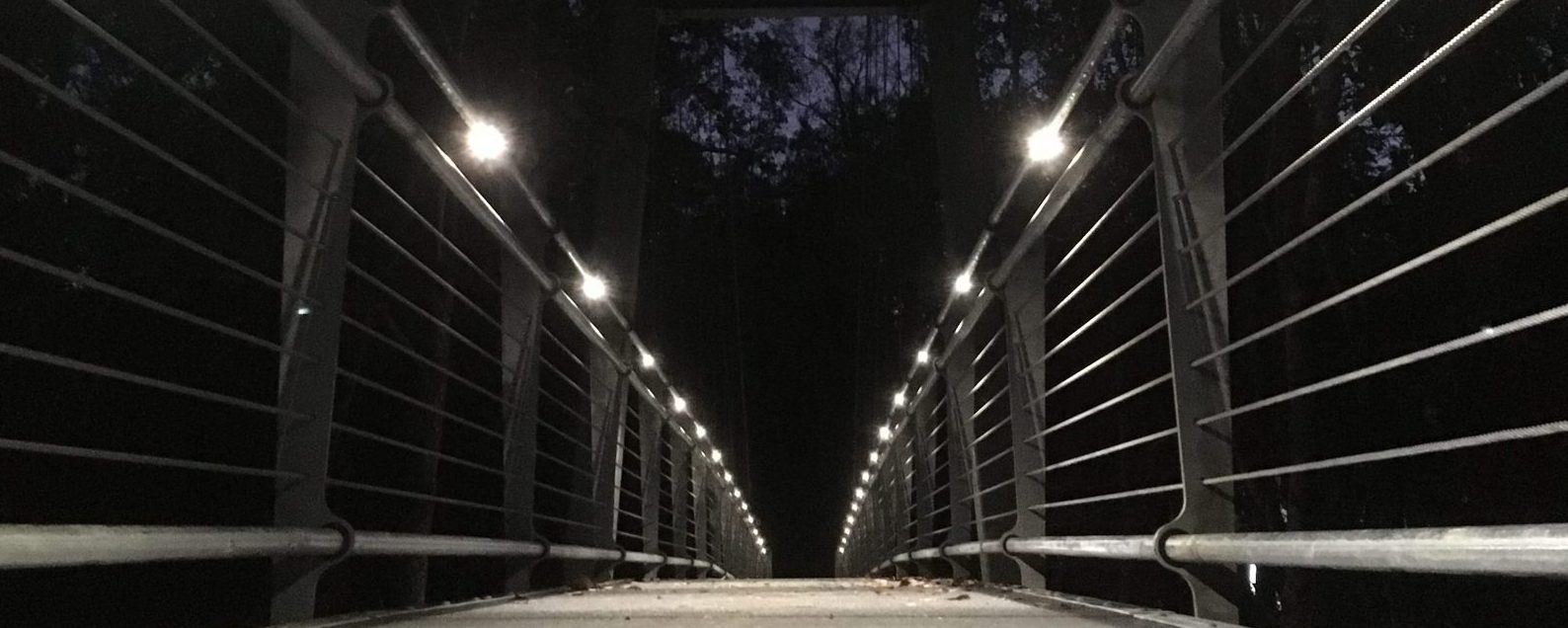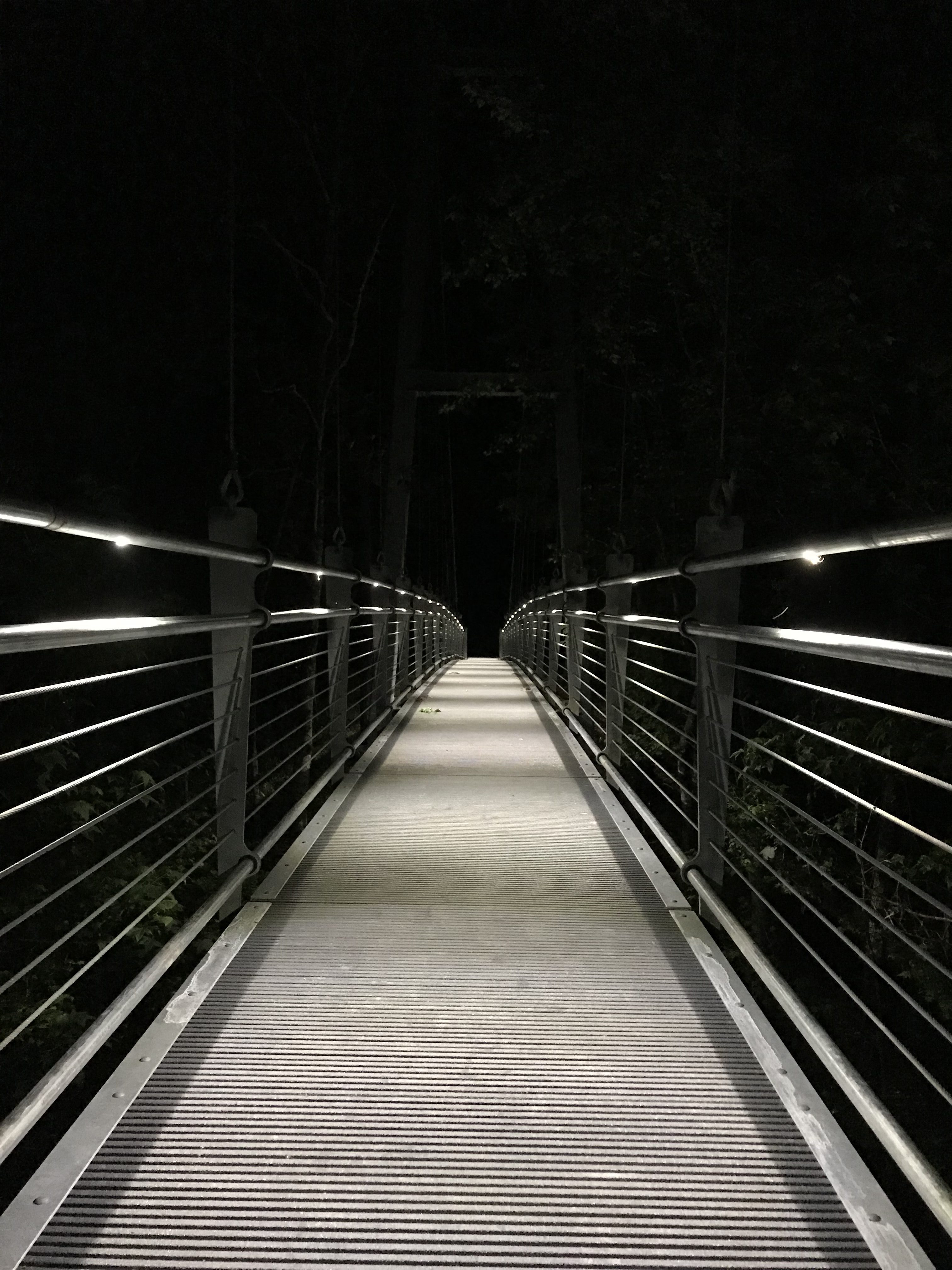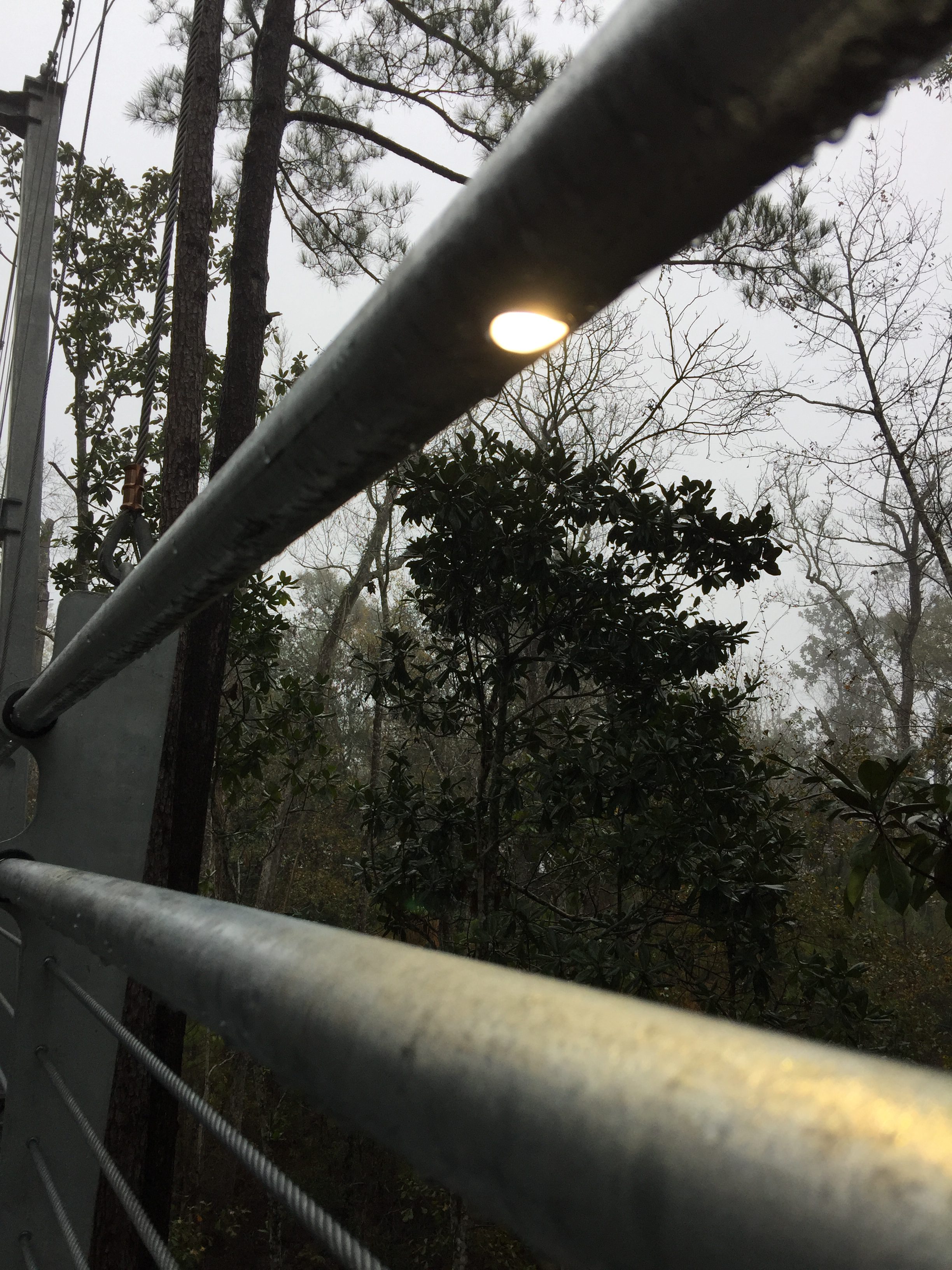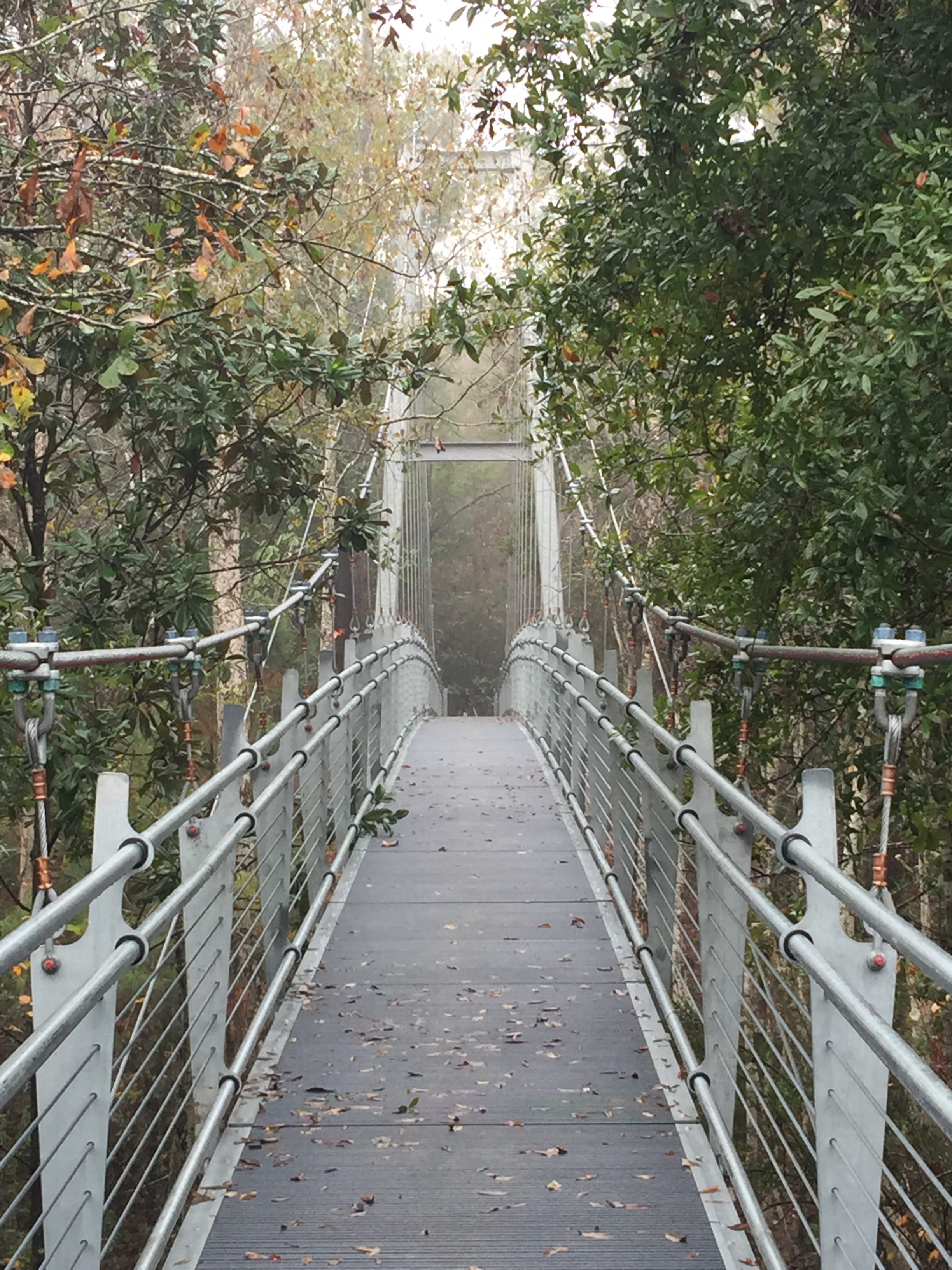- Bridge Specs: Span = 202′ (236′ with approaches): Travel Width = 4′ 6″: Deck = I-4015 Pultruded Fiberglass: Mainlines = 1-3/8″ dia. A586 Structural Strand: Anchors = Concrete Deadmen fixed with helical piles.
- Services: Design/Engineering, Fabrication, Installation.
- Location: 30.391250, -88.776583
View Gulf Coast Research Laborary Cedar Point Suspension Bridge Image Gallery
On August 29, 2005, Hurricane Katrina struck the Gulf Coast over a broad area between New Orleans, LA and Gulfport, MS with sustained winds in excess of 125 mph and a 27′ storm surge. The damage from this hurricane was profound; nearly 2,000 people lost their lives, and the cost of rebuilding in the years that followed was $125 billion.
At our shop in Seattle, struggling with the scope of the disaster and inadequacy of the initial emergency response, our old boss Carroll Vogel–a man with a bias for action, and one who did not suffer fools–began making plans to load our trailer with water and emergency supplies and drive south to provide relief. Fortunately, FEMA (and the Red Cross, and countless others) found their footing; supplies and resources began making their way to the Gulf Coast. For Carroll and ourselves, the crisis moment seemed to pass.
For people along the Gulf Coast, the crisis would not pass for a long, long time. One of the millions of stories of tragedy and loss was under way at the University of Southern Mississippi’s Marine Education Center. The Executive Director of the Gulf Coast Research Laboratory (GCRL), Dr. William Hawkins, was surveying catastrophic damage to his institution: “The coast after Katrina was dark, damaged, and dysfunctional. Everything was difficult—driving, getting water and food, navigating FEMA and other bureaucracies, communicating with no phones, mail, or internet, finding missing family and friends.”
The GCRL had two main campuses; the Halstead Campus in Ocean Springs and the Marine Education Center in Biloxi. Dr. Hawkins hiked to the Halstead Campus in the aftermath of the storm: “At the lab entrance, we were met by an Ocean Springs policeman who asked us our business. We told him we were with GCRL and were there to inspect the damage. He said there was no need to as the lab had been completely destroyed. Well, damn, I thought, that complicates things.” The officer’s assessment turned out to be pessimistic; the Howse Oceanography Building, sited above the storm surge, weathered the hurricane. The losses at Halstead were dire, but not devastating. That was the good news. There was no good news at the second campus; the 36,000 square-foot Marine Education Center in Biloxi was a complete loss.
Months were spent recovering from the immediate effects of the hurricane–creating housing for the 30 faculty and graduate students who had lost their homes, restoring electricity, mucking out buildings, and assessing damage. In time, a consensus emerged that rather than rebuild the Marine Education Center at Cadet Point in Biloxi, it should be relocated to a better-protected location on Cedar Point south of Ocean Springs. In the years that followed the University of Southern Mississippi secured funding–some of it from FEMA–and began to settle on a vision for a new facility–something sustainable, elegant, and resilient. USM brought Lake|Flato Architects on board to oversee design of the project.
And so it was, many long years after Katrina, Seattle Bridge finally made our trip to the Gulf Coast–not with emergency supplies, but with a bridge needed to connect two arms of the Cedar Point site. At long last, in a strange and circuitous way, we had a chance to help.
Starks Contracting, the Prime Contractor on the project, excavated and drove helical piles in spring 2017, culminating in concrete placement in May 2017. Our design effort was spearheaded by Albert Highberger, Adam Peck, Nacho Bravo and Allen Young, and fabrication began in earnest under Ken Gilman in early September.
(As fabrication of the Cedar Point Suspension Bridge was getting underway, another meteorological tragedy struck in a different part of the world: Hurricane Maria made landfall in Puerto Rico and made a direct strike on Caguas, site of our Caguitas Suspension Bridge. Maria hammered Caguas with 38 inches of rain and 150 mph winds; trees were toppled and denuded, houses were blown off of their foundations; the tiny, pertinent silver lining was that our suspension bridge withstood the storm in the way it is designed to, emerging unscathed.)
In just over two months, all 40,000 lbs of steel were fabricated, galvanized, and loaded onto two trucks (with gear, hardware, and tools) bound for Ocean Springs, MS. Seattle Bridge personnel, led by Martin Walz, arrived in Ocean Springs on November 12, 2017. Installation advanced rapidly and without pause, despite the presence of live electrical conduit suspended on crosstrees across the ravine along the path of the bridge. Tower legs were set by November 17; mainlines were installed by the 23rd; conduit was loaded to a skyline by the 28th. By December 3, Seattle Bridge could return the Telehandler used by Austin Thompson for setting the towers.
Neither a burglary ($4,000 worth of Seattle Bridge equipment was stolen from our locked job box one night) nor a freak winter storm (the first in the region since 2008, delaying deliveries for three days) knocked Seattle Bridge off schedule. The bridge was complete—with decking, lights, and rails—on December 20, one day ahead of schedule.
The Cedar Point Suspension Bridge is a fitting centerpiece to an important research institution, one whose construction required the same stubbornness, resourcefulness, patience, and resilience that characterized the years-long recovery of the Gulf Coast. We thank Matt Wallace, Grace Boudewyns, Chris Snyder, Milady Howard, Chris Gutierrez, Jimmy and Robert Starks, Don Abrams, and many others for the opportunity to participate, and for all of the help and support along the way.
